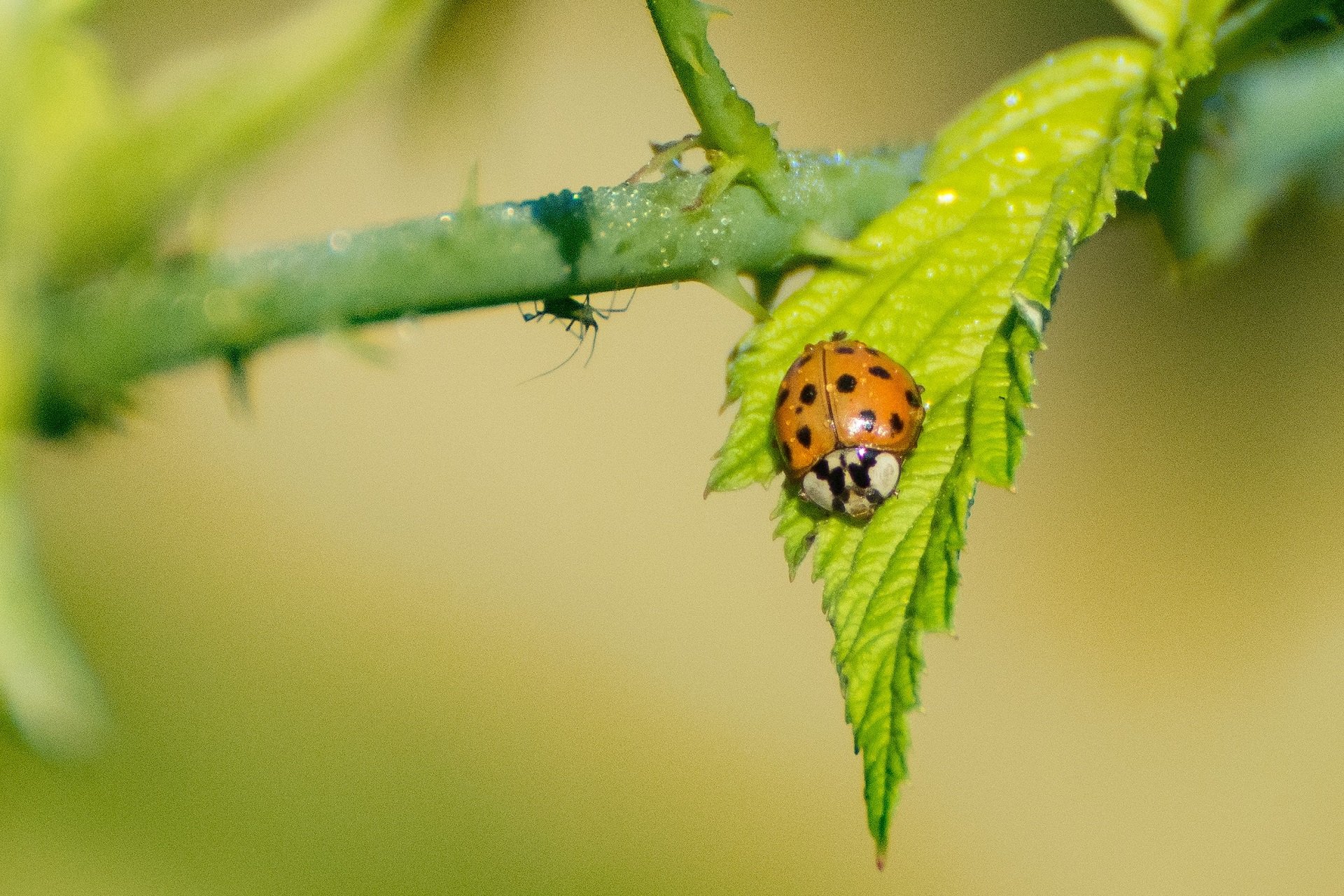Ladybugs
Everyone loves to catch a glimpse of ladybugs—especially gardeners. The larva of these beneficial insects feed on those pesky aphids that harm apple, peach, and plum trees, as well as maples and pines.
Identification
Both native and non-native species of ladybugs abound in New England. The lady beetles seen inside and outside homes in huge numbers during the fall are non-native lady beetles (Harmonia axyridis) introduced from Asia. Two other species found in Massachusetts include the convergent ladybug (Hippodamia convergen) and the non-native seven-spotted ladybug (Coccinella septempunctata). The seven-spotted ladybug was named the Massachusetts state insect in 1989.
The non-native ladybugs are similar in size to our native species, but their color and patterns are more variable, ranging from yellow to red and from no spots to up to a dozen spots.
History
How the non-native ladybug came to the United States depends on whom you ask. One theory holds that the USDA introduced them here in the early 1900s to combat aphids on fruit trees, but many believe this population did not survive. They were then discovered in Louisiana, prompting the theory that they may arrive in cargo ships from Asia. A third theory is that they were introduced to reduce aphids in pecan groves.
In any case, you can now find them in all New England states, and they apparently do no harm to our native lady beetle species.
Benefits of Ladybugs
The larva of these beneficial insects feed on those pesky aphids that harm apple, peach, and plum trees, as well as maples and pines. A report from the USDA's Southeastern Fruit and Nut Tree Research Laboratory has found that in some pecan groves, growers have reduced pesticide use 50 to 75 percent thanks to ladybugs.
Situations & Solutions
Non-native beetles are attracted to white trim on houses and, when they manage to get inside, white ceilings; the light-colored surfaces may resemble the cracks and crevices of limestone outcroppings where the beetles overwinter in their Asian homeland.
Ladybugs Inside Homes
What can you do if ladybugs have overtaken your home? One option is to do nothing. If left alone, ladybugs will soon find their way into the attic, holes in walls, or other out-of-the-way locations to spend the winter. And, except for a rare warm, winter day when a few might get confused and fly around, you won't see them until spring.
When they emerge in the spring all they want to do is get outside and "fly away, fly away," so open windows a couple of inches and let them do just that! If you can’t tolerate them, vacuum them up rather than squishing them because they leave a foul-smelling, yellow stain behind.
There is no need to resort to insecticides. Chemicals are dangerous—ladybugs are not!



